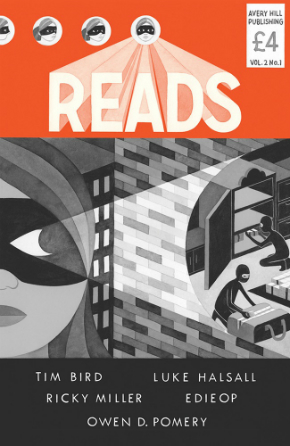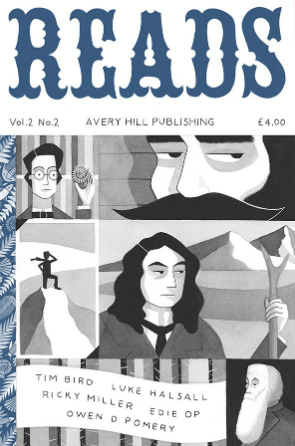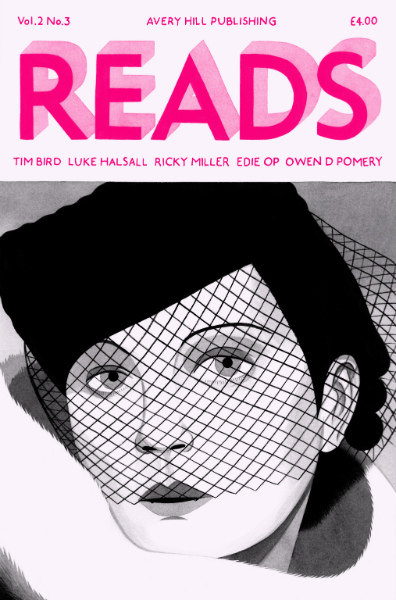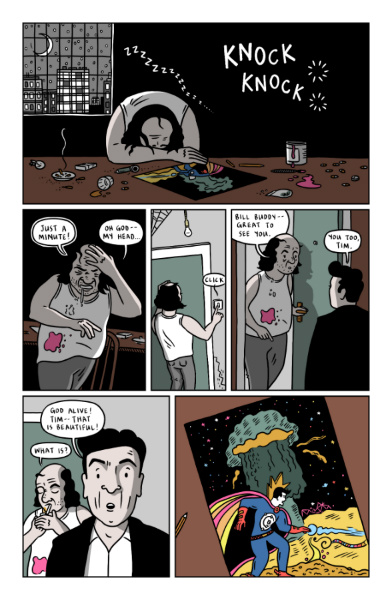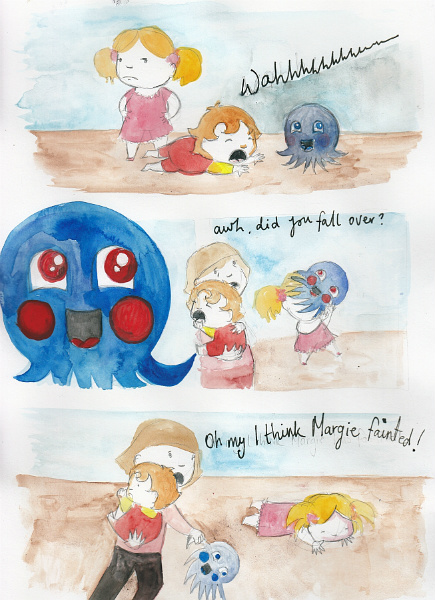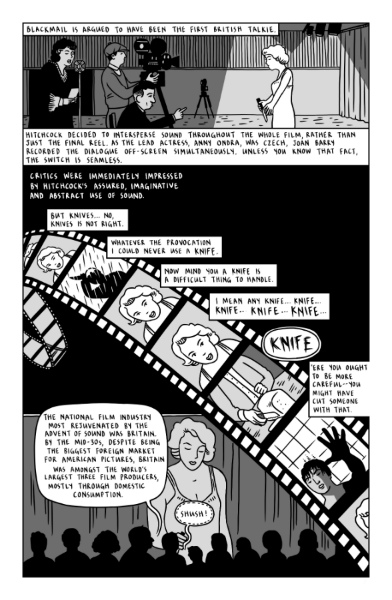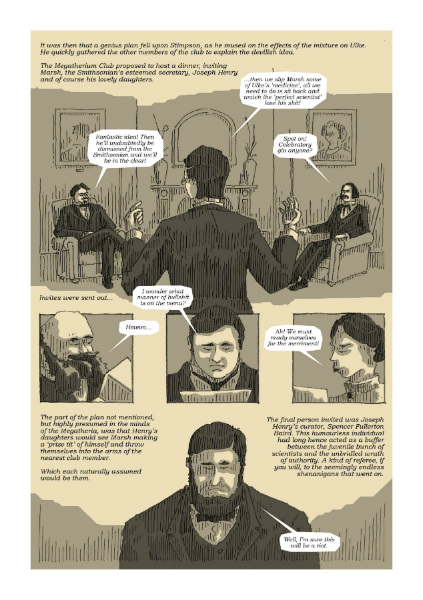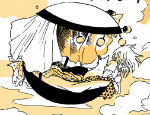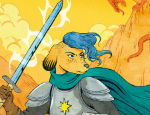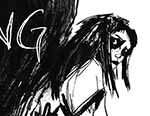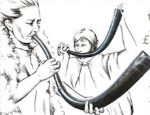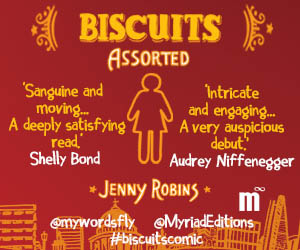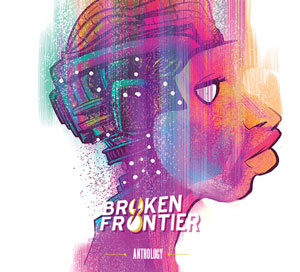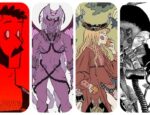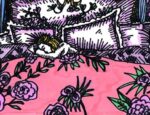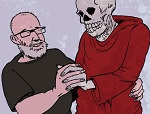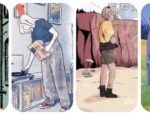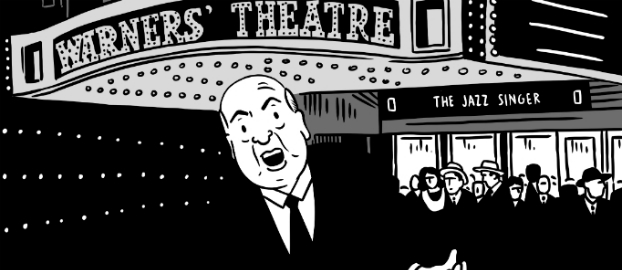 One of acclaimed micropublisher (and Broken Frontier 2014 Award nominees in the Best Publisher category) Avery Hill’s most overlooked projects, the anthology Reads is a wonderfully eclectic collection of complete stories and serials (first issue reviewed here at BF). The second volume of Reads recently reached its third issue with offerings from the likes of EdieOP, Owen D. Pomery, Tim Bird, Ricky Miller and Luke Halsall, all wrapped up in another stunning cover by Eleni Kalorkoti.
One of acclaimed micropublisher (and Broken Frontier 2014 Award nominees in the Best Publisher category) Avery Hill’s most overlooked projects, the anthology Reads is a wonderfully eclectic collection of complete stories and serials (first issue reviewed here at BF). The second volume of Reads recently reached its third issue with offerings from the likes of EdieOP, Owen D. Pomery, Tim Bird, Ricky Miller and Luke Halsall, all wrapped up in another stunning cover by Eleni Kalorkoti.
With subject matter ranging from the slapstick nineteenth century scientific shenanigans of ‘The Megatherium Club’ to the fictional comics offices of ‘The Bullpen’, the life of Alfred Hitchcock in ‘Hitchcock & Film’, and whatever has seeped out of the oddly endearing but slightly sinister mind of EdieOP this month, it really is a book that demands your attention. A special bundle of all three issues of this volume is available to buy here from the AHP online store.
Reads #3 is the latest book to get some in-depth analysis from those involved via our new series of ‘Small Press Inside Looks‘ wherein artists discuss their creative process and give insights into their behind-the-scenes working practice. This edition is a little different as all six practitioners involved take part in this multi-voice creators’ commentary…
On ‘Reads’
Ricky Miller, Editor
Reads has quite a long history now. It can’t be considered separately from its sister publication, Tiny Dancing, which Dave White (my co-publisher) started publishing nearly five and a half years ago (yes, Dave, it’s been that long). That title contained comics and illustration and competitions and various other things that I can’t describe and would be incomprehensible as a cohesive whole unless you’ve ever met Dave. Then it makes sense.
A year or so later the comics split into a new title, Reads, due to no public demand whatsoever and Avery Hill was pretty much born. I became the editor and reached out to a few creators I’d been interested in working with, some of whom shockingly said yes. We wound up the title with issue 4, deciding it was more hassle than it was worth due to having to find new creators each time and then promptly re-launched it. The new Reads was to have four strips over four issues, by the same creators each time, meaning I had to do nothing, from an editorial perspective, other than correct Pomery’s spelling.
I’m eternally grateful to Edie, Luke, Owen and Tim for signing up to all four issues and actually delivering the work on time and to a massively high standard. They’ve all had greater triumphs and praise heaped from every direction, but I genuinely think that these issues have contained work to equal the high points of each of their comics output to date.
And finally a word on the covers, part of my laziness/editorial genius was in persuading Eleni to do all four covers. I knew they’d be good, but if you’re familiar with Eleni’s work, you’ll know that she’s been going through an amazing period as an artist lately and we’ve totally caught that wave. Next issue I get to see what she creates as a cover in honour of one of Edie’s strips…the mind boggles; I really can’t wait.
The Cover
Eleni Kalorkoti, Artist
As I obsessively watched and re-watched my video of Hitchcock’s The 39 Steps as a teenager this cover was a great opportunity to make some fan art of Miss Smith, the mysterious spy whose death sets the film’s plot in motion. Looking at movie fan magazines from the ’30s and ’40s for inspiration, I wanted to create a cover that would be striking and direct – hopefully people will be caught by Miss Smith’s powerful gaze on the comic shop shelves and not be able to resist picking up Reads for a closer look.
For more on Eleni Kalorkoti check out her site here.
The Bullpen
Luke Halsall, Writer
This was a really important page for me to hit the beats right. Tim was a character that in the original draft the reader would have met in issue one, but was not a main character. It did not seem to make sense to give up space in the opening issue to Tim, when instead we could spend time building the two main characters in Jack and Bill. This scene is similar to one I had drafted in issue one but instead of Bill seeing the work that Tim had produced, he would simply wake up and notice the work that was there. I feel that has much more impact in this issue. Working with artist Tim Bird has been great. For example when I wrote the script this was a five panel page structure but he added the beat of the lights being switched on. This sounds like a simple thing to have but it adds so much more structure to the piece and the eventual reveal of the artwork. I gave Tim some of Ditko’s Dr. Strange as inspiration for the style I felt the character’s artwork would portray.
For more on Luke Halsall check out his site here.
Timothy Bird, Artist
I don’t know much about superhero comics or the politics between the writers of the Silver Age of comics of the ’50s, so working with Luke on The Bullpen has been something of an education for me! I agreed to do it because Luke creates great characters – right from the start each character in The Bullpen brings their own history and world view to the story. There’s much more to the story than a re-telling of ’50s comics writers though – there are also complex family relationships, the backdrop of the space race and American counterculture.
Luke wrote The Bullpen to be a longer form comic, and has had to edit parts to fit into the eight pages available in this anthology, so I sometimes have to cut dialogue from Luke’s scripts to make sure I can fit the text into the panels (for example, on this page in panel four, Bill was supposed to reply “Sorry I’m late Tim, I just lost track of time”). Likewise, Luke sometimes asks me to change parts of the artwork (again on this page, I originally drew a more suburban scene outside the window in panel one – Luke wanted it to be a city apartment). This collaborative approach to creating the comic has been really interesting.
Scenes from the fictional comic that the team are working on (The Nucleus) are cut into the action of The Bullpen. I’ve used different colour palettes to indicate these different strands of story.
Find out more about Timothy Bird’s work at his site here.
My Friend Armi
EdieOP, Writer/Artist
I love the freedom that I have creating comics for Reads. Even though it’s a serialised anthology, I have the opportunity to create something new and horrific each time that I submit a comic. I have been following a theme of beasts/monsters/creatures throughout, starting with the germ-slug hybrid Lucius Jellybean, the demon creature Muriel and then a slightly different direction of the monster that is Armi. My Friend Armi sort of came to me as an idea of what if your childhood toys loved or defended you with the same intensity that you loved them when you were small? What if that love never dwindled, in comparison to the dwindling affections of someone outgrowing their toys/childhood? It all started to develop on its own from there!
There were a lot of pages I could have chosen to write about when discussing My Friend Armi as the whole comic crossed a fading moral line in my head. I’d like to talk about the first page because it was the line that I crossed when I drew Armi’s first victim. I had a lot of fun drawing this comic but when I put paint to pencil on the first page, I was thinking… am I really going to do this, is this really where I want the comic to go? Well where else was it going to go? So there it went from there and it just kept getting more and more creepy. I chose to leave it up to the reader to decide if Armi smothers his victims to death or just unconsciousness which I know is slightly ambiguous and vague. But writing it I didn’t feel that committing to either theory enhanced the story, rather that letting the reader choose which they would enjoy to believe more! I’m aware that I have a younger audience too, so if parents are reading this to their kids they can choose for it not to be too grim or gory. Personally, I would rather believe they survived because really the antagonists are just jerks rather than actually bad people!
For a stroll on the “Sunny Side of Sinister” visit EdieOP’s site here.
Hitchcock & Film: The Talkies!
Ricky Miller, Writer
The main challenge of trying to write a history of Hitchcock and of film is obviously going to be in trying to fit in a lot in a limited space. Tim’s skills at conveying information visually are the only thing stopping it from spiraling out of control. There are plenty of times in the script where I’ll leave space for him to do the heavy lifting in the storytelling and he pulls it off beautifully each time.
The part of this page I was most interested in was the roll of film with the intercuts of Blackmail and Psycho. It’s an image that I had been thinking about since I first decided to work on this project. The scene in Blackmail is important because it shows Hitchcock’s mastery of sound from the very beginning of his use of it. He uses the word ‘knife’ repeatedly in the dialogue, like a stabbing motion, and I wanted to reference that and then intercut it with images of Psycho, without comment, to show how he would do this in the future with the music in the Psycho shower scene. In the limited space we have to cover these years of Hitchcock’s life it’s something that doesn’t need to be there, but it’s those bits of interpretation that make it more interesting for me, rather than just conveying information you could get from Wikipedia. If we ever do an extended version of this strip then there will be much more of that. Comics are great at linking ideas together across time through words and imagery, just like film!
Timothy Bird, Artist
I designed the layout of the page to make the image of the roll of film the main focus – cutting the page in half and overlaying the panel at the bottom. The dialogue becomes more intense across this sequence of frames, so I tried made the roll of film pop out of the page, with the images becoming larger, to reflect this.
There’s a lot of text on this page, so it was a challenge to make sure there was space for the artwork to communicate ideas too. For example, I wanted to show how slightly different sequential images of the actress Anny Ondra in the roll of film would build up a moving image – an interesting point of contrast with comics.
Ricky has a clear vision of how he wants his scripts to be illustrated. On this page I originally drew the first panel as Hichcock and Joan Barry (doing voices-overs) in the background, with a close-up of Anny Ondra (actress) in the foreground. Ricky felt that it didn’t convey the fact that the sound was being dubbed live, so asked me to re-do the panel, making all of the characters the same size. As the artwork is done digitally, this was relatively straight forward to do.
The Megatherium Club
Owen D. Pomery, Writer/Artist
I love working on Megatherium Club stories, as I get to approach the comic-making process with the same level of anarchism as the characters indulge in their antics! Sure, there are rules and parameters in the layout and structure, but working within this framework, I then do everything I can to wreck it. This means no uniform panel sizes, action breaking out of the panels and sometimes slightly confused text ordering. This all helps to give the impression that everyone is talking over each other and wild interjections of speech and action are flying in from all angles. For the same reason the artwork is much more sketchy and chaotic; but by simultaneously evoking the feel of historic etchings, it gives the whole piece much needed authenticity. In a way, the sturdiest structure comes from the narration, which dutifully and sarcastically attempts to explain the logic behind the erratic shenanigans taking place, keeping the tale on track.
This page is one of my favourites, as it contains seven characters spread over five slightly different times and locations, but all relating to the same moment of transition in the story. Despite all this going on, I enjoy that fact the page maintains a symmetry and order, keeping the reader on track as the maniacal plot barrels on.
The Megatherium Club is also fun to write and draw, as it plays about with imagination, allowing me to draw more fantastical scenes, and as you can see later in this story, step well outside the boundaries of reality…
For more on Owen D. Pomery’s comics and illustration visit his site here.
For more on Avery Hill Publishing check out their site here. You can buy a special bundle of all three issues of Reads to date here online priced just £10.00. You can follow all of the Reads team on Twitter at the following links: Eleni Kalorkoti, Ricky Miller, Luke Halsall, Tim Bird, EdieOP, Owen D. Pomery and follow Avery Hill Publishing here.
For regular updates on all things small press follow Andy Oliver on Twitter here.





